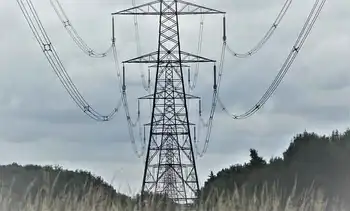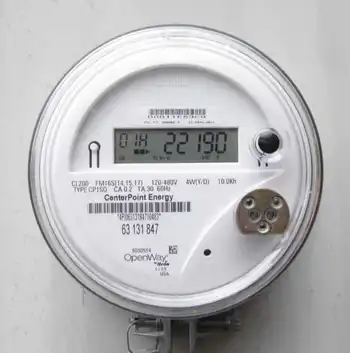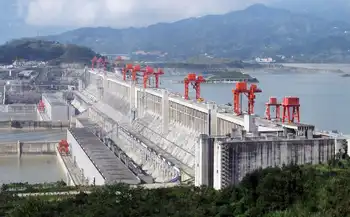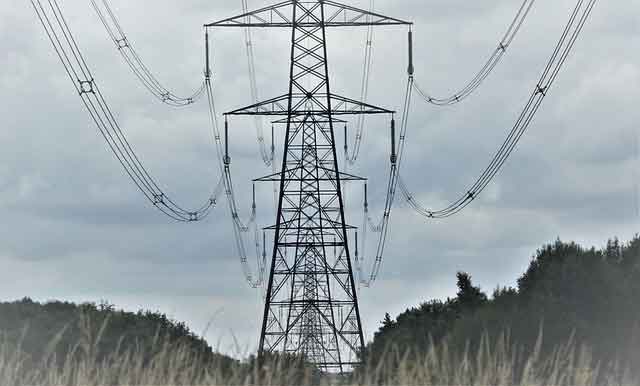Economic Boom Brings Energy Shortages to China
By The Toronto Star
Substation Relay Protection Training
Our customized live online or in‑person group training can be delivered to your staff at your location.

- Live Online
- 12 hours Instructor-led
- Group Training Available
An acute energy shortage has idled the nation's factories three days a week, forced workers to take leaves and dimmed streetlights in the big cities.
It's not just the sudden shortage of electricity that has shocked China.
The gloomy outlook for the future has also rattled the nation's top leadership and unnerved foreign investors who are wondering how the world's fastest-growing economy can possibly sustain its breakneck pace.
The answer, undoubtedly, is that it can't.
In recent months, 24 of China's 31 provinces have experienced power blackouts because of surging demand.
The land of cheap labour is going to have to start charging more for electricity — not just to pay for new power plants, but also to encourage conservation by profligate users.
China is slowly, painfully, discovering the limits to growth — and the price of prosperity.
A refrigerator and air conditioner in every home has saddled the nation's major cities with unsustainable electrical consumption.
Private automobiles on congested arteries have helped transform China into the world's second-biggest oil consumer, overtaking Japan.
And rapid expansion of power-hungry aluminum and automobile factories has drained the power grid beyond expectations.
The short-term solution — yet more coal-fired power plants — is a recipe for blacker skies in a country already burdened by the world's most polluted cityscapes.
It is, in short, the ugly underside of the economic miracle, and it has been a long time coming.
"We may be facing the most severe power shortage situation since the 1980s," says Zhao Xizheng, head of the State Power Grid Corp.
China produces more electricity than any country outside the United States and spends 13 per cent of its economic output on energy consumption — about double the American level, according to a report by the State Council.
Outdated technology in aging power stations, and an inefficient electrical grid, account for more wastage and require a major overhaul.
China is expected to allocate the equivalent of $450 billion to its transmission infrastructure over the next 25 years, about one-third more than what Canada and the United States will spend, predicts the International Energy Agency.
Meanwhile, electricity demand is likely to double over the next 15 years.
"It will not be sustainable to rely on heavy energy consumption to drive the economy," says Hu Jie, an engineer at the China National Petroleum Corp.'s research unit.
More than 10,000 firms in Beijing and Shanghai have told hundreds of thousands of employees to book off for a week at a time.
Factories in the south are operating at night to avoid blackouts during peak hours and importing powerful diesel generators to help them meet export targets.
Major hotels are doing their laundry at night. Government offices are scaling back dramatically on lighting and air conditioning, ordering employees to eschew heavy suits in the workplace.
"It's a very serious problem that they need to face," warns Simon Pang, the Beijing-based vice-president of Atomic Energy of Canada Ltd. (AECL), who is closely monitoring the situation with an eye to potential sales of CANDU nuclear power reactors.
"They hadn't foreseen the coming surge in requirements, so they were very slow in building new power plants," says Pang.
"In my view, the situation will not improve that much because a lot of people in China are making more money and everyone wants a TV and air conditioner, compared with a few years ago."
Government statistics show that China manufactured 50 million air conditioners and 23 million refrigerators last year, with most of them being sold on the domestic market, according to the official Xinhau news agency.
Rapidly escalating personal consumption is what scares energy analysts — and creates market opportunities for people like Pang, who are trying to sell nuclear power plants.
But the origins of the current crisis lie with the unparalleled growth of factories along the eastern coast surrounding Shanghai and the factories of Guangdong in the Pearl River Delta that feeds Hong Kong.
In fact, factories account for about three-quarters of China's energy use.
With economic growth above 9 per cent since last year, electricity consumption has surged by about 16 per cent for each of the past two years — with some observers suggesting that it has increased by 18 per cent so far this year.
The result is a shortfall in China's energy supplies of about 10 per cent, according to Hong Kong-based energy analyst Angello Chan of Credit Suisse First Boston.
"There's a bottleneck in the power supply," says Chan, and the government is desperately trying to fix the problem before it gets worse.
"The president and the premier are all very aware of the problem and spending a lot of personal time on the subject."
On orders from high up, state banks have cooled lending to factories that were planning to expand in energy-intensive fields like aluminum smelting, steel and cement production.
But putting the brakes on those proposals will only prevent the problem from getting worse, without making it any better.
Analysts point out that the crisis has been brewing since last year, when the first brownouts appeared on the horizon.
Continuing drought has undermined the output of hydro plants and hot weather has placed an added strain on consumption, setting new records in the big cities.
China has responded to the challenge as it usually does when facing shortfalls — by promising to build more power plants at a faster pace than ever before.
Spending on generators doubled last year to more than $30 billion.
By the end of this year, the electricity supply will have increased by 19.5 per cent from the end of 2002, reaching more than 420,000 megawatts. About three-quarters of the increase will come from coal-fired plants.
The controversial $33 billion Yangtze Three Gorges dam has already started producing electricity and is scheduled to be completed within five years.
Without its additional capacity of 18 gigawatts of electricity, Chan says China would be facing "a lot more social problems."
Nuclear power plants, which currently account for less than 2 per cent of China's power needs, are likely to reach about 4 to 6 per cent in coming decades, and "even 4 to 6 per cent is very aggressive," notes the AECL's Pang.
To reach that level, China plans to bring two 1,000-megawatt plants on line annually for the next 17 years — and recently inaugurated two CANDU plants.
China will make up most of the current shortfall by building more coal-fired power plants, drawing on its irresistibly vast reserves, even at the expense of the environment.
"Coal has environmental problems," says Chan, "but it's just too plentiful and just too cheap."
The continuing reliance on coal has raised alarm bells with China's increasingly vocal environmentalists, who fret that the country is paying too much attention to boosting capacity instead of encouraging conservation.
"I think environmentalists worry about this — it's a really big problem in China," explains Xiaoyi Liao, head of the Global Village environmental watchdog in Beijing.
"This is a good opportunity for us to increase public awareness and make people think more about conservation."
For the State Environmental Protection Administration (SEPA), the outlook is increasingly bleak.
Acid rain pollution costs China about $18 billion a year in environmental damage and will get worse if more coal-fired plants spew pollution into the air.
China discharged 21.6 million tonnes of sulphur dioxide into the air last year, 90 per cent of which came from burning coal — the highest level since 1998. That figure is far above the target of 18 million tonnes set for 2005, suggesting that the painstaking environmental gains of recent years are being rapidly eroded.
By 2020, China's consumption of coal is projected to double.
"Thermal power plants discharge a large proportion of the country's sulphur dioxide emission," SEPA vice-director Pan Yue told reporters in June.
"If their emissions are not well controlled, the acid rain pollution will probably worsen."
Government officials are grudgingly taking note, acknowledging for the first time that conservation must be a component of any energy strategy for the future.
The alternative is to keep building more power plants at a breakneck pace.
Many analysts doubt it can be done.
Zheng Jianchao, a researcher at the Academy of Engineering of China, put the challenge into perspective recently when he mused about China's overly ambitious energy shopping list.
Said Zheng: "We need an additional supply equivalent to four more Three Gorges hydroelectric dams, 26 Yanzhou coalmines, six Daqing oil fields, eight gas pipelines and 20 nuclear power plants — as well as 400 thermal power generators and the network to link them all together."











